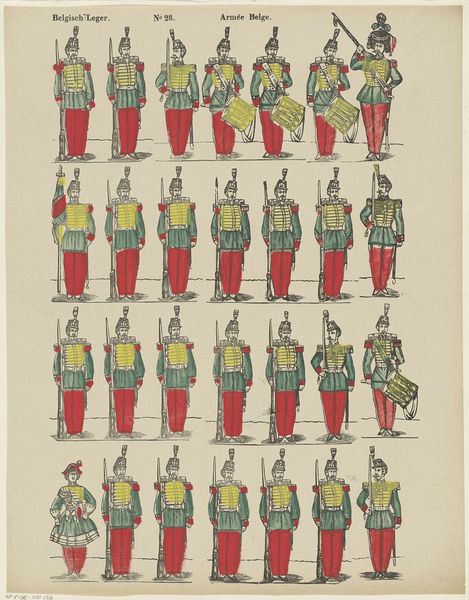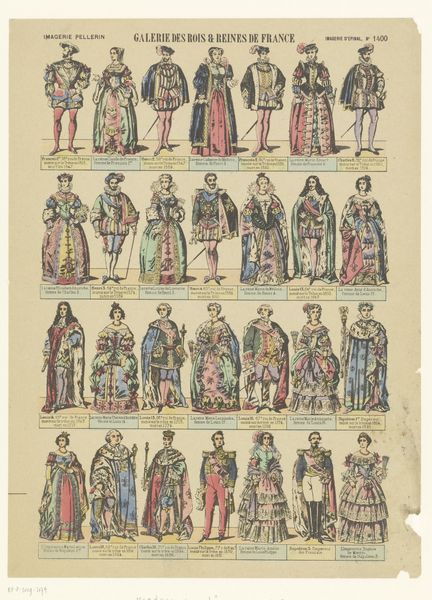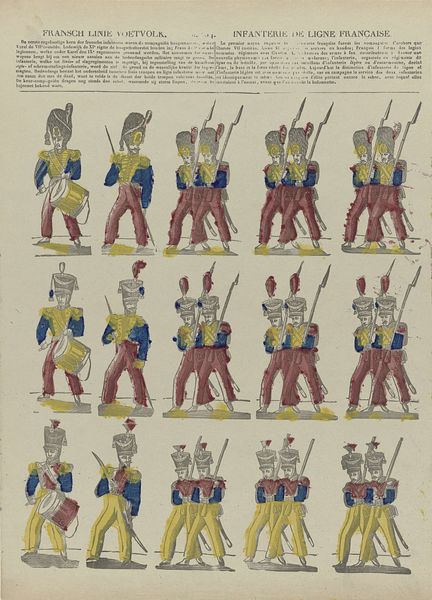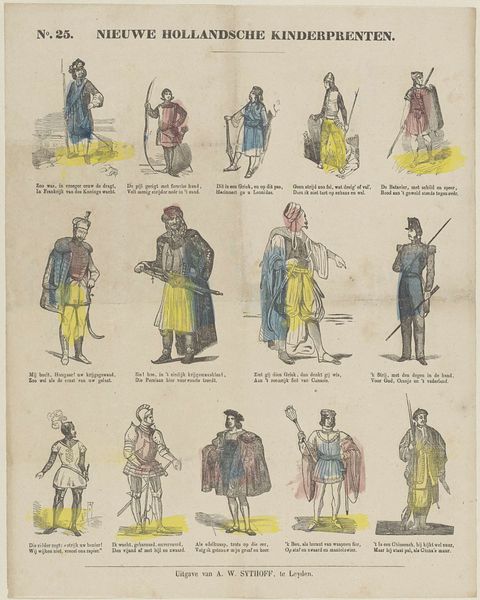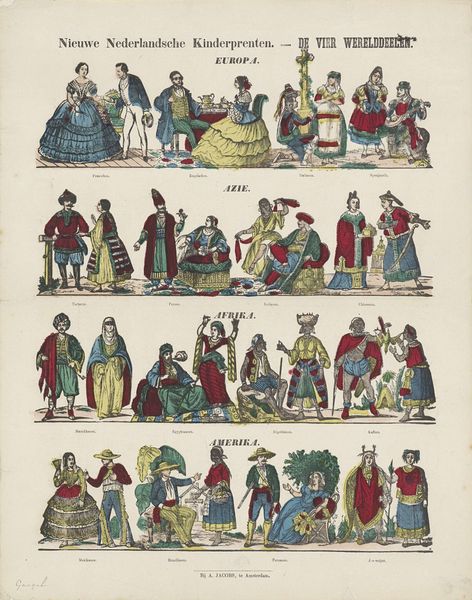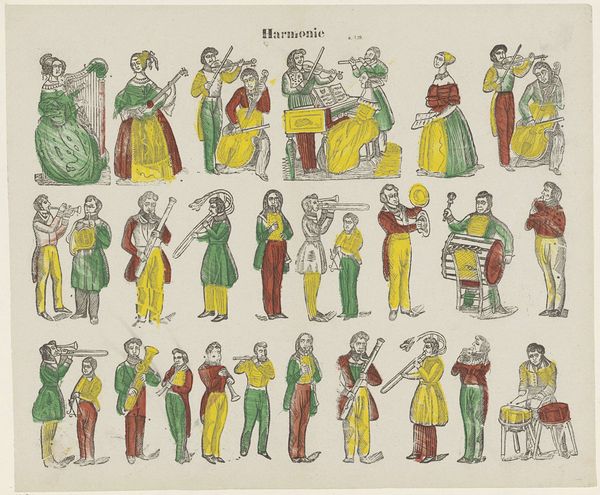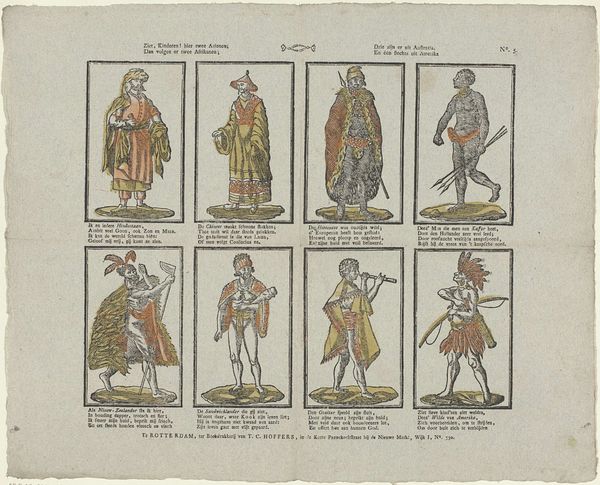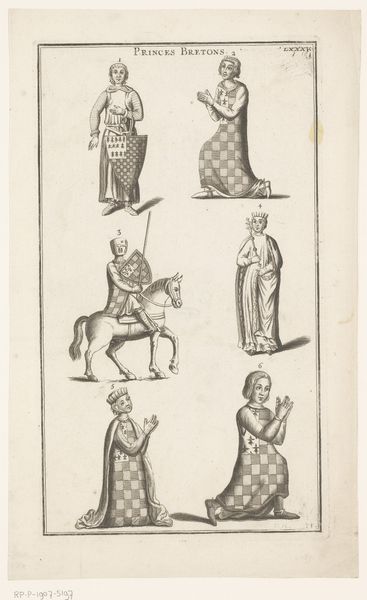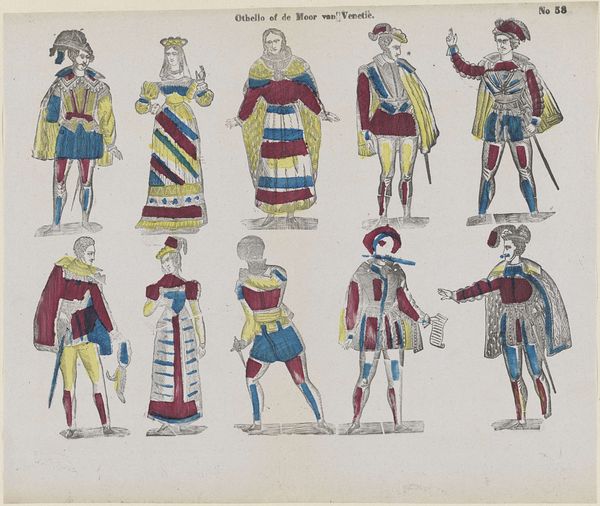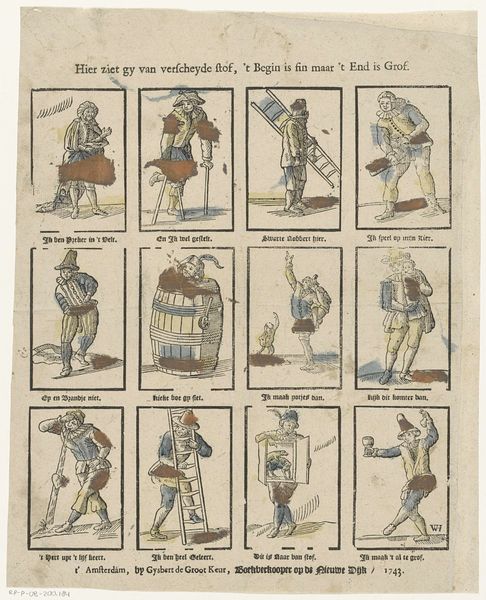
Volkeren van verschillende landgewesten / Habitans de diverses contrées 1866 - 1902
0:00
0:00
drawing, print
#
portrait
#
drawing
#
underwear fashion design
# print
#
fashion and textile design
#
figuration
#
personal sketchbook
#
fashion illustration
#
sketchbook drawing
#
genre-painting
#
storyboard and sketchbook work
#
cartoon carciture
#
fashion sketch
#
sketchbook art
#
bridal fashion
Dimensions: height 427 mm, width 319 mm
Copyright: Rijks Museum: Open Domain
Curator: The colours jump right out at me! Red and green combinations with touches of yellow. It's certainly eye-catching, although the figures feel a bit… stiff. Editor: Let's delve deeper. What we're looking at here is a print dating from between 1866 and 1902 by Franciscus Antonius Beersmans entitled "Volkeren van verschillende landgewesten / Habitans de diverses contrées," or "Peoples of different regions." The print presents an array of figures dressed in what appear to be traditional, historical costumes. Curator: Historical is the word. They look like something out of a history play! You know, amateur theatricals. What can we tell about its production? Is it just a simple print? Editor: Well, considering the date and its subject matter, it's highly likely this print was created as part of a broader movement to document and, arguably, codify cultural identities within specific regions. Printmaking technologies were rapidly advancing. The industrialization of print methods, with increased lithographic outputs, makes items such as this more affordable to mass audiences and contributed to ideas of heritage becoming more accessible than ever before. Curator: So, the circulation of these prints helped construct and circulate particular ideas about "regional" identities, and made that identity into a consumer product. Were these costumes genuinely worn, or are we looking at a romanticized, idealized version of the past? The line between documentation and fabrication seems pretty thin here. Editor: Precisely! That interplay is critical. Were they used for theatrical costumes? Fashion plates, perhaps? It appears this item also circulated as a commercial venture into "fashion illustration" as the catalog indicates. Prints like these would find themselves reproduced for popular consumption to fuel public nostalgia through historical fantasy or inspire consumer markets. Curator: Food for thought! This brief look reminds us that even seemingly straightforward depictions of clothing are tied up in complex questions of identity, labor, and consumption. Editor: Indeed. This single sheet gives us a glimpse into 19th-century print production as well as cultural forces at play and, of course, invites reflection on what clothing represented then, and perhaps now, for us.
Comments
No comments
Be the first to comment and join the conversation on the ultimate creative platform.
